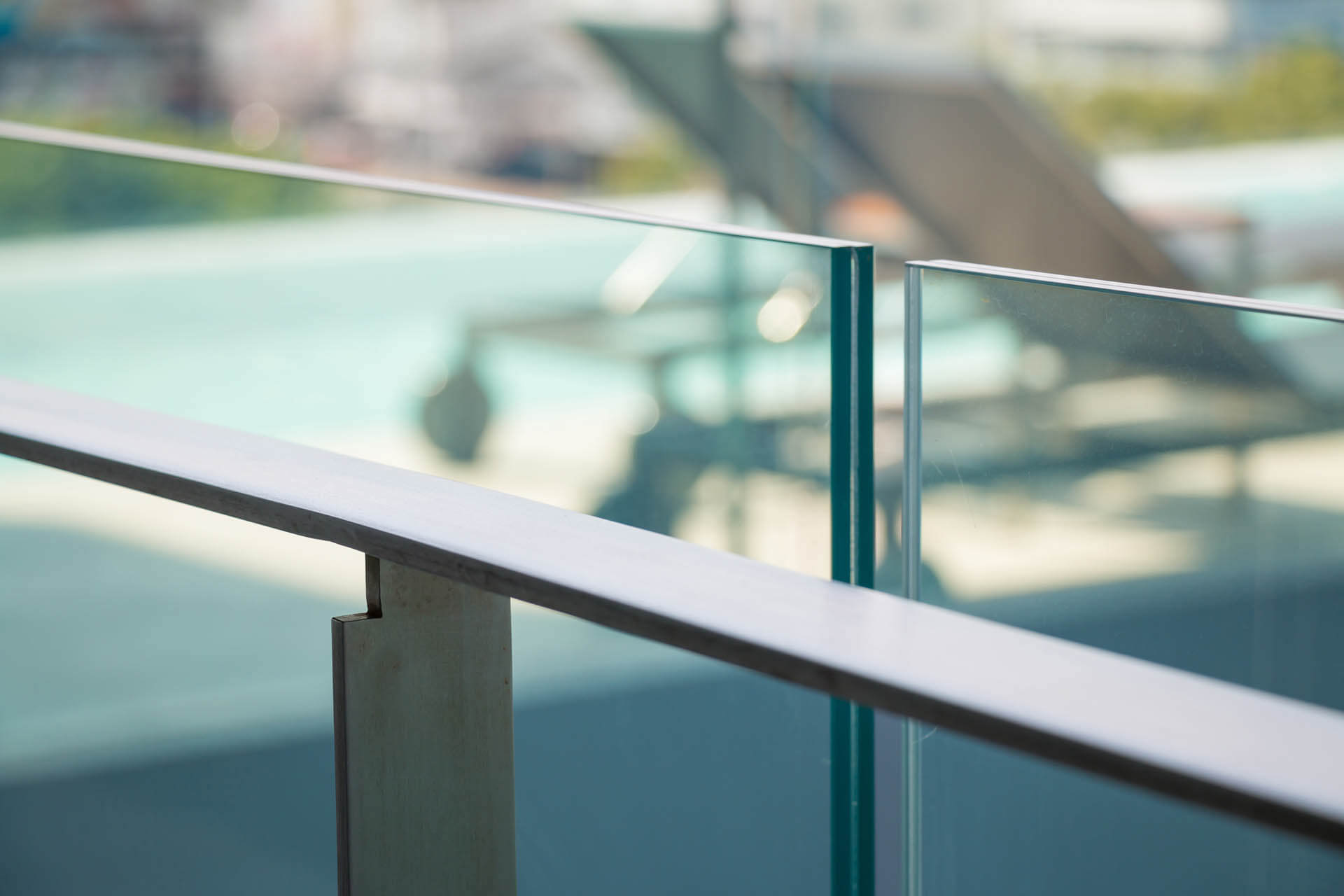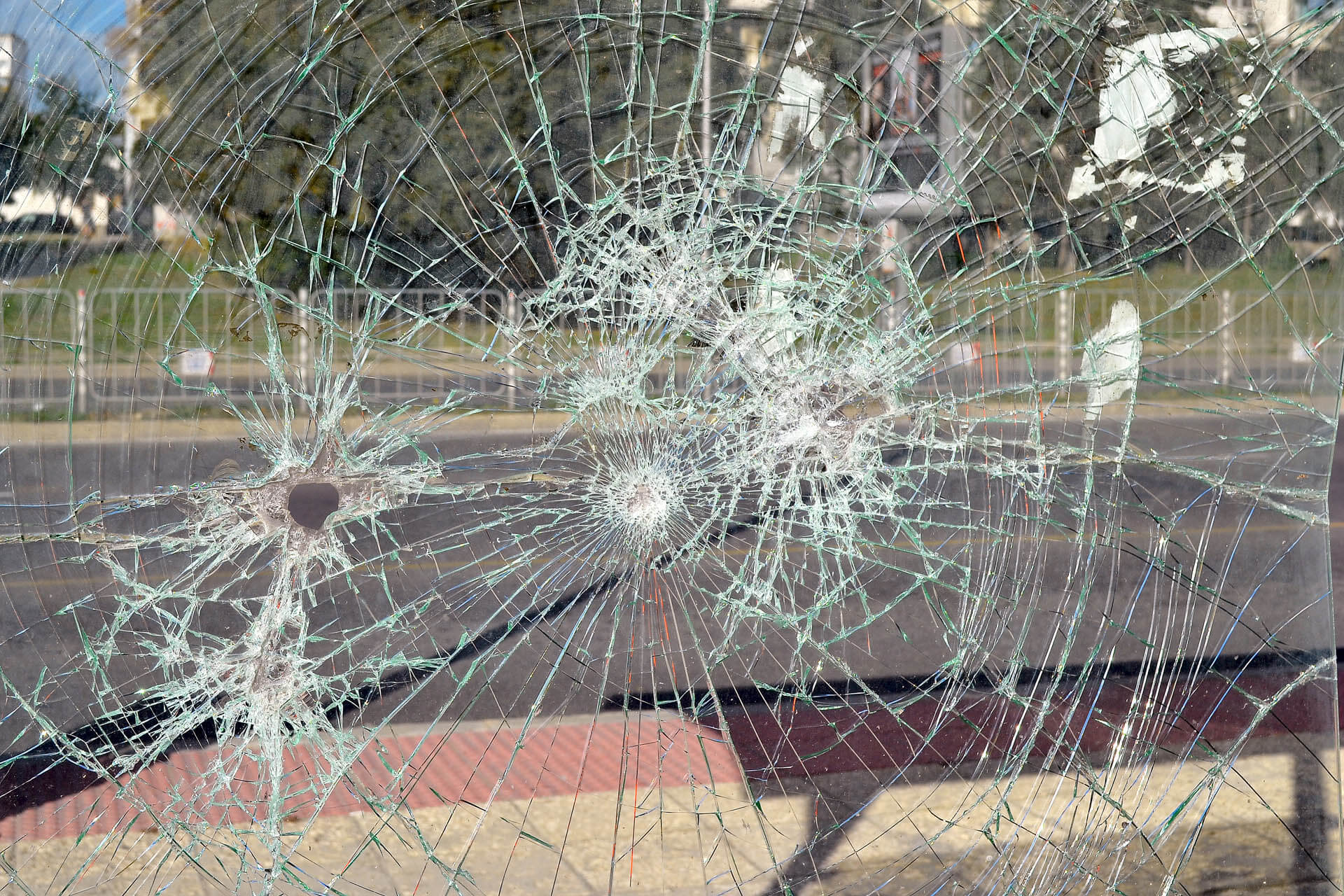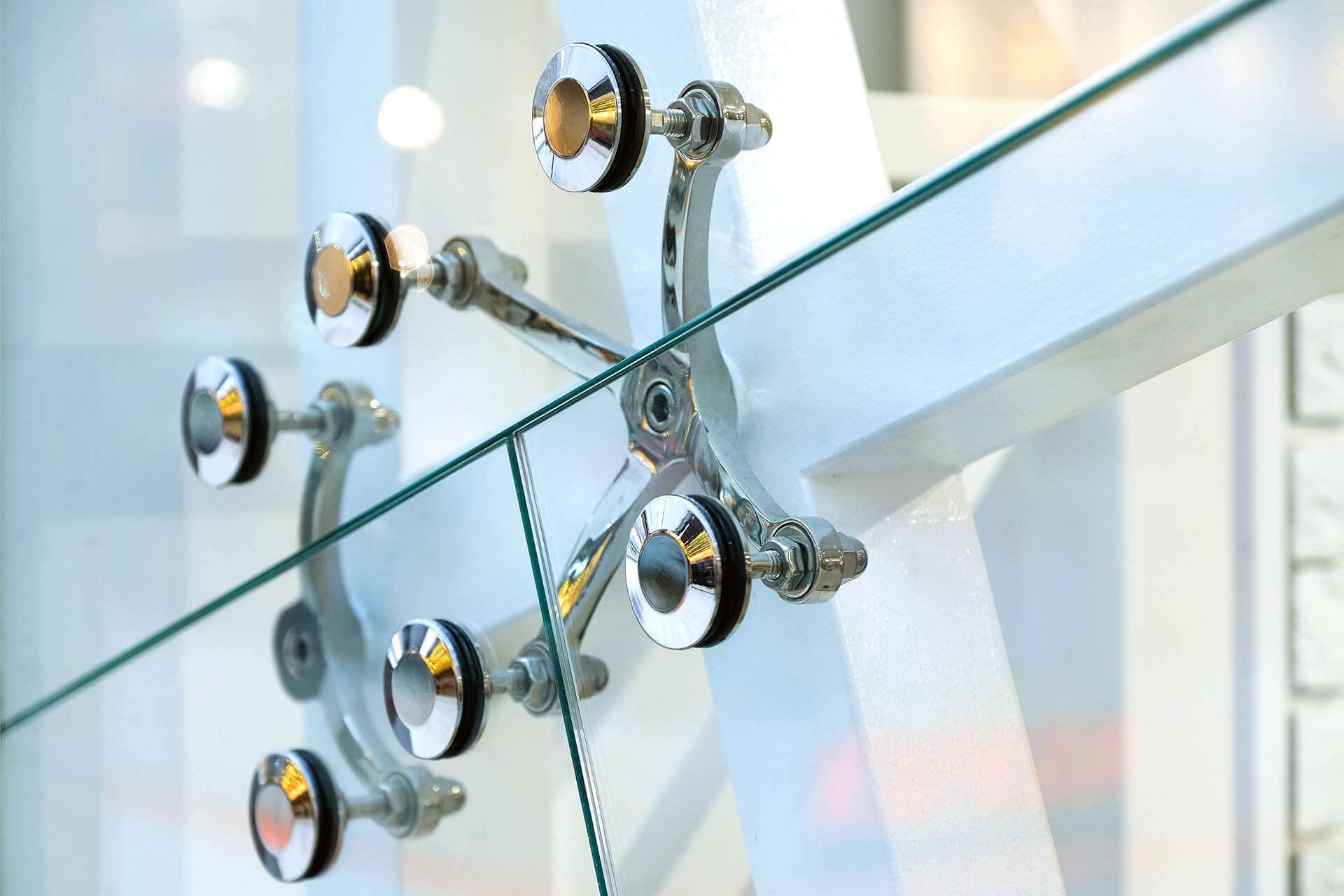Laminated glass is a type of safety glass that is held together by a film when it is shattered. This membrane, which essentially holds the two or more panes of glass in place in the event of shattering, consists of a thin layer, usually of polyvinyl butyral (PVB), ethylene vinyl acetate (EVA), lonoplast polymer, liquid cast resin (CIP) or thermoplastic polyurethane (TPU). The intermediate layer, made through heat and pressure, keeps the glass pieces together even when they break, and its high strength prevents the glass from breaking into large sharp pieces. This creates a characteristic “cobweb” crack pattern when the impact is not enough to completely puncture the glass. For this reason, the TRIPLEX glass pane offers excellent “passive” safety, in relation to the public. The term “passive” refers to the fact that TRIPLEX glass, contrary to what is erroneously believed, breaks just as easily (if not easier) than ordinary glass. The safety characteristics attributed to it, however, are due to its behavior once its breaking point is exceeded and afterwards. The fragments caused by the breakage and afterwards, remain firmly attached to the PVB adhesive film. In this way, they are rendered harmless and incapable of causing serious injury. This special feature is what makes the Triplex glass pane preferable as a first class safety glass.




Triplex glass production process
The production process of TRIPLEX starts with the careful washing of the glass panels, which are to be bonded. Then the glass panels enter a room of controlled climatic conditions (temperature, humidity, etc. ), the so-called “WHITE ROOM” (clean room), where every trace of dust, moisture and debris of any kind has been removed. There, workers wear special clothes and hats, and the temperature remains constant night and day throughout the year. In this space, the initially opaque PVB film is placed between the glass panes. Then the set is successively passed through a press, a heating oven and a press again. With this process, the air that was trapped between the PVB and the glass panels is removed, while at the same time the pvb is softened and a pre-weld is made. The glass pane is then fed into an autoclave, in which the pressure is increased to 8 to 12 BAR in hot condition. There, the final welding and the final clarity of the glass pane takes place.
After coming out of the furnace, the glass pane has acquired its final physical and mechanical characteristics, which will accompany it throughout the rest of its “life”.
Of course, there is an alternative method of producing TRIPLEX, with an EVA (not PVB) type adhesive film in between. This production method is much more flexible, allowing the possibility of encapsulating between the bonded glass panels various decorative elements, such as fabrics, paper surfaces, flowers, etc. which is impossible in PVB technology. Also, TRIPLEX EVA has advantages in sound insulation and ultraviolet retention characteristics.
Thermoset EVA offers full bonding between the glass panels, interlocking other products such as metal mesh, fabrics, etc.
Soundproofing
Laminated glass is also used to improve the sound insulation in frame glass because it significantly improves sound attenuation compared to monolithic glass of the same thickness. For this purpose, a special acoustic PVB film is used to bond the two or more glasses together.
Protection from UV radiation
Also, it should not be underestimated that TRIPLEX glazing provides high levels of protection against ultraviolet (UV) radiation. Thus, they have surprisingly good results in helping to protect against sun-induced fading, eliminating up to 99% of UV radiation. This is favorable in applications such as shop fronts, shop windows and generally where solar radiation is responsible for discoloration of fabrics and curtains.
Security/property protection
Triplex glazing, today, are laminated safety glazing manufactured according to the EN 12543 standard. After the PVB is placed between the glass sheets, they are all subjected to heat and pressure in an autoclave. This results in a solid adhesion of the PVB layers to the glasses. In a fully framed installation, glass fragments are held by the PVB and the glass still retains a residual strength until it is replaced.
At this point it should be made clear that, contrary to what people generally believe, TRIPLEX has a lower breaking strength limit than a simple glass of equal thickness. In short, this means that the TRIPLEX glass will break more easily than a plain glass of the same thickness. The reason that makes it an attractive choice is not its fracture toughness, but its behavior once its strength limits are exceeded, the fact that once it breaks, it will not collapse uncontrollably and injure us. It will remain in place protecting the space (house, window, car, car, plane, etc. ) until it is replaced.
The thickness and number of glasses can be varied to create TRIPLEX glass with different characteristics and to comply with the safety requirements of each type of application.
All types of glass can be integrated into applications with TRIPLEX. For example, a triple glazing unit can be made of common white glass or pyrolytic coating or soft coating or colored glass etc. The use of ultra-white glass to create a TRIPLEX composition provides high levels of transparency and excellent optical transmission, without sacrificing any of the safety features. This is mainly necessary in applications that require thick and compact structures such as bulletproofing, flooring, aquarium glass, etc.
PVB films can be either, transparent, translucent, translucent, or, for some applications, colored. In interior applications it is also possible to combine decorative effects.
In international nomenclature it has been prevalent to call each triplex glass pane with a code of the form XXX. YY where the consecutive “X” express the thicknesses of the glass panes of which the TRIPLEX consists and the Y express the number of PVB films (0. 38mm thick each) inserted in each intermediate bonding.
For example, TRIPLEX 33. 1 consists of two sheets of 3mm glass and a 0. 38 mm PVB film of 0. 38 mm each.
Similarly, the 8108. 28 glass pane is a TRIPLEX consisting of an 8mm glass pane, 2 0. 38mm films, a 10mm glass pane, 8 0. 38mm films and finally another 8mm thick glass pane.
Triplex glass is used in architecture, automotive industry, photovoltaics and so on. The most common use of triplex glass is for glazing in buildings and car windscreens.
The applications are varied. In general, they can be categorized according to the consumer needs they can meet.
Indicatively, we can mention the following as general categories of applications: